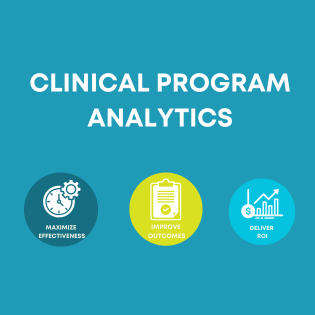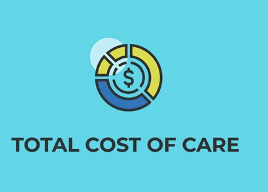The Age of the Data Connoisseur
Morning Visit with the Doctor
The other day, I arrived at one of my favorite breakfast restaurants for an early morning meeting with a physician friend. I’m not one for Country Fried Steak or Chocolate Chip Pancakes with Whipped Cream, but I was feeling like a bit of an indulgence. Maybe the Gringo Killer skillet. Right before we were about to order, Dr. R looks up from the menu and asks me, “Do you know what the biggest contributor to the high cost of healthcare in the US is?”
I should have known there was a real insight coming, but I’d only had half a cup of coffee. “The cost of medical supplies and drugs,” I planned to say. Supply costs are approaching labor as the largest single category of expenses in hospital systems, after all.
Before I could set myself up to be corrected, Dr. R gave me the answer he was looking for. “It’s what we choose to put into our bodies.”
You Are What You Eat
When TV dinners came out in the 1950s, they were touted as a great convenience for families and everything you need for a meal in one easy to prepare package. Unfortunately, the use of frozen nitrogen in their preparation removes a lot the natural flavoring, so manufacturers use more fat, more salt, and add artificial sources to enhance the food’s appeal. I won’t say that this is a main reason for the decline of health in America, but it probably has been a contributing factor.
To the credit of many American’s, the consumption of prepared frozen TV dinners has been on a steady decline for the past couple of decades with more and more people turning back to fresh alternatives and even making the act of cooking a social event in and of itself. While food is still typically seen as a commodity, the act of preparing fresh foods has started to become a point of pride for many people. Through the act of cooking, we raise the awareness of what we’re planning to put in our mouths and in our bodies. Here’s to hoping this helps America bend back the curve toward healthier life styles in other ways, too.
As Dr. R suggested, in order to improve health and reduce the amount of healthcare services we consume, we need to be feeding ourselves conscientiously. Luckily, I think we are seeing some of that shift happen. Cheers!
The Data Analyst Will See You Now
While corporations are not people, American businesses have been going through a similar cycle between convenience and intentionality with the way they manage information and make decisions.
In the early days of enterprise decision support, analysts had to do all the hard work of understanding data, gaining an intimate understanding of what it meant and how it was created, preparing that information, and presenting it to decision makers in a meaningful way. This process could take days or weeks to complete. We were cooking the data carefully over cast iron, wood burning stoves to create functional and high-nutrition meals for our executives.
As we moved into the 1990s, the technology to conveniently package and freeze-dry our data into tidy data sets was born. We built corporate information factories that harvested raw source data, processed it, packaged it, and freeze-dried it into data warehouses and data marts. When someone needed a report, all they had to do was pull it out of the self-services business intelligence system and pop it in the microwave for a few minutes while the queries ran. Unwrap the cellophane cover and there are nice, tasty insights from which to make business decisions. The grocery freezer even had different sections. You could get finance reports, operations reports, and supply chain reports. Whatever the executive team felt like for the strategy du jour.
For many years, data warehousing and business intelligence professionals took every opportunity they could to remind you that data and information are not the same things. Raw data wasn’t usable. It first had to be cleaned, standardized, verified, prepared, and optimized, and the best way to do that was with a data warehouse and business intelligence system. Those solutions made access to information easier and protected users from misusing or misunderstanding data.
Reducing the effort that it took to get a fresh set of reports for routine decision making served business leaders well for a time. They were able to react to the questions they had anticipated. Assuming that the only information available for decision making was the data in the data warehouse, however, also lulled many decision-makers into a kind of complacency. Since the work of getting answers to the questions they had anticipated was now so much easier, they felt like decision-making should also be an easier job. Many of them lost the drive to think through their decisions with intentionality and consider second and third degree consequences. The issue was a growing disconnect between management decision-making and a deep understanding of the underlying daily operations that created that data.
It is a statistical commonplace that the interpretation of a body of data requires knowledge of how it was obtained.
-Fischer 1934
Your CEO is a Data Connoisseur
As business leaders have begun to feel this consequences of this negative trend, they’ve also started to call for more interactive and exploratory systems to access the data they need for decision-making. In 2016, Gartner announced the official move away from the prepared TV dinners of business intelligence when it updated its Business Intelligence Magic Quadrant criteria to focus more on data exploration and ways to empower users to access their own data. In 2018, Gartner has gone a step further in changing the name of this magic quadrant to Analytics and Business Intelligence, signaling that the data analytics part is primary.
This doesn’t mean an end to data warehouses and business intelligence technologies or professionals. These still have the same capabilities and skills needed by the data connoisseur decision makers, but they have to recognize their role as sous chef rather than packaged food manufacturing company. This new relationship requires real-time collaboration, a breadth of skills, and adaptability. Agile analytics processes, a pantry-like data lake, new data preparation and analysis tools, and a focus on how data is plated as an interactive visualization have become the new expectation of data-centric decision-makers.
Egg White and Spinach Omelet
Maybe I should have ordered the egg white and spinach omelet, but I didn’t. I had an avocado, bacon, tomato, and cheese omelet with hash browns; substituted fruit for the English muffin; and saved half of it to eat for lunch. Today I did better than yesterday. Tomorrow I’ll work to do better than today.





